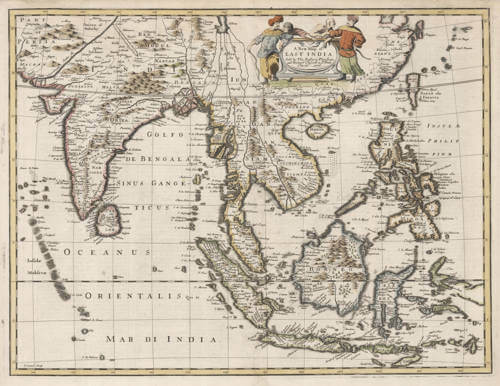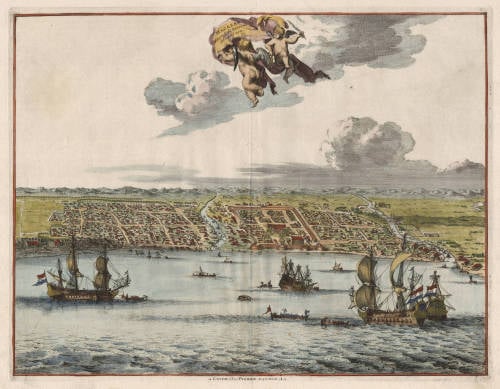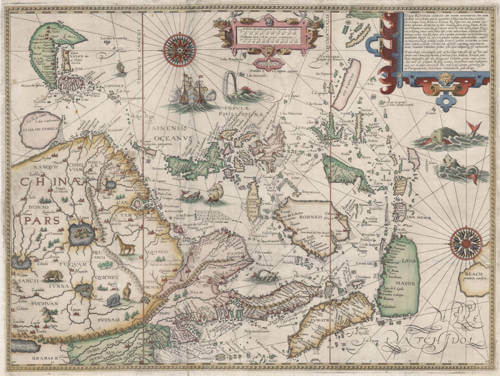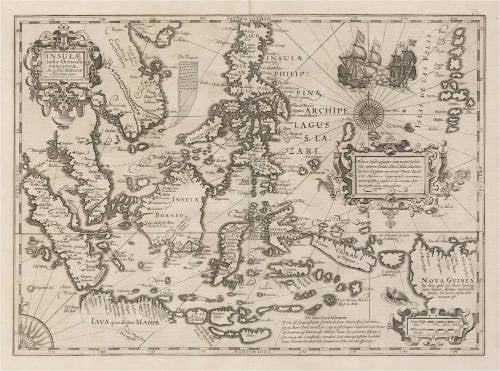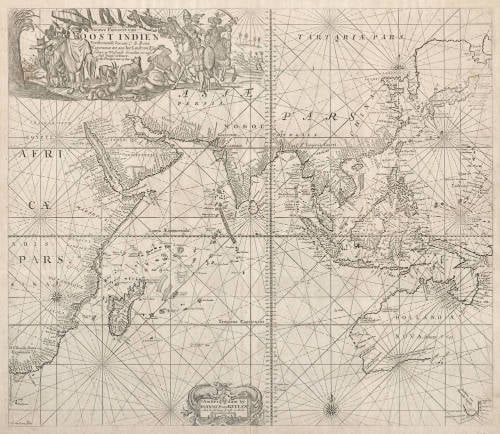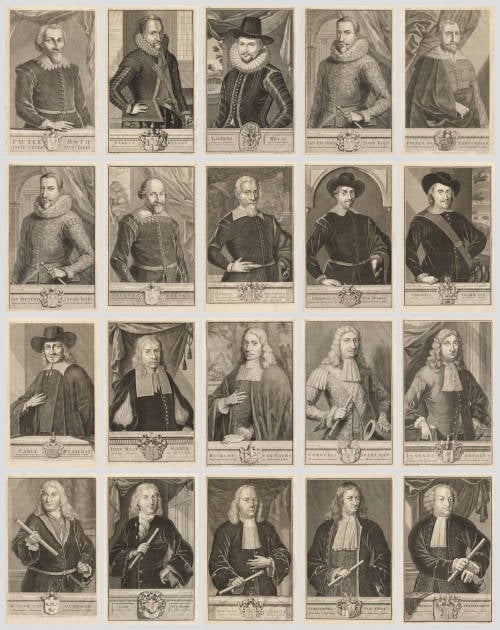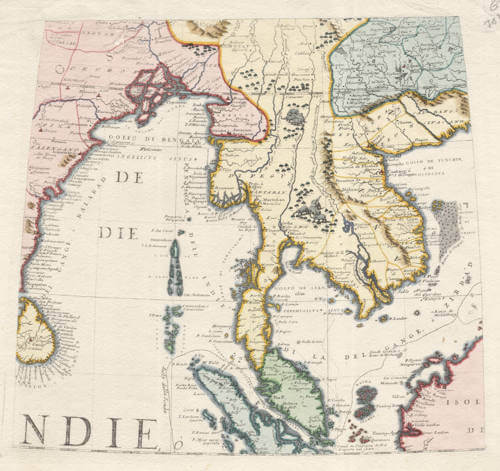Leen Helmink Antique Maps
Antique map of Southeast Asia by John Speed
The item below has been sold, but if you enter your email address we will notify you in case we have another example that is not yet listed or as soon as we receive another example.
Stock number: 19753
Zoom ImageCartographer(s)
John Speed
Title
A New Map of East India
First Published
London, 1676
Technique
Condition
excellent
Price
This Item is Sold
Description
Very handsome example of John Speed's elegant map of Southeast Asia.
The map is very rare, being one of seven additional maps only included in the second and final edition 1676 of Speed's "Prospect of the Most Famous arts of the World", the first world atlas published by an englishman.
The Cartography of the East Indian Islands - Insulae Indiae Orientalisa
Among English seventeenth century cartographers one name, John Speed, stands out above all others primarily for his new county maps of Great Britain published between 1610 and 1611 in the atlas The Theatre of the Empire of Great Britain. Speed was not a chart-maker or, indeed, an engraver, and although he provided much new material for the county maps over and above that contained in the earlier county maps of Saxton and Norden, the plates were sent to Amsterdam to be engraved by Jodocus Hondius. In 1627, just before Speed died, he published A Prospect of the Most Famous Parts of the World which, combined with the 1627 edition of the Theatre, became the first world atlas produced by an Englishman.
The first edition of the Prospect did not include a map of the East Indian Islands and the public had to wait almost fifty years until the 1676 edition before that omission was remedied. ‘A New Map of East India’ was one of seven new maps added to the 1676 edition of A Prospect of the Most Famous Parts of the World. The map was engraved by Francis Lamb and published by Thomas Basset and Richard Chiswell in their St. Paul’s Churchyard premises. The map was closely copied from the earlier map of Frederick de Wit published in 1662 with a similar outline and title cartouche showing two turbaned native figures.
Most English cartographers during the first half of the seventeenth century relied very heavily on their Dutch counterparts for cartographic detail of areas outside Britain and especially for Asia and Southeast Asia. Although largely derivative in nature, English seventeenth-century maps of the East Indian Islands are rare, particularly in the folio size.
(David Parry)
Related Categories
Related Items
